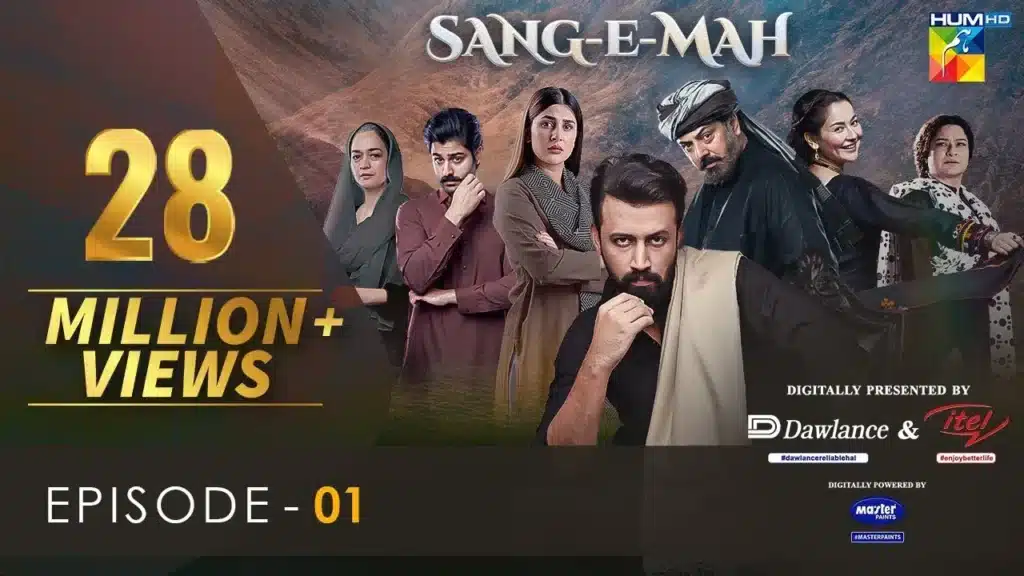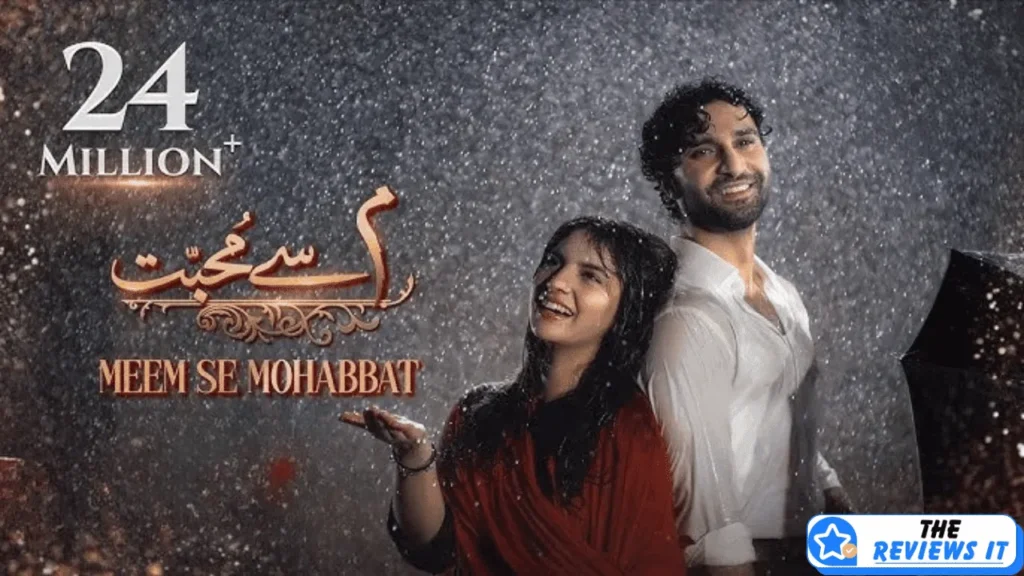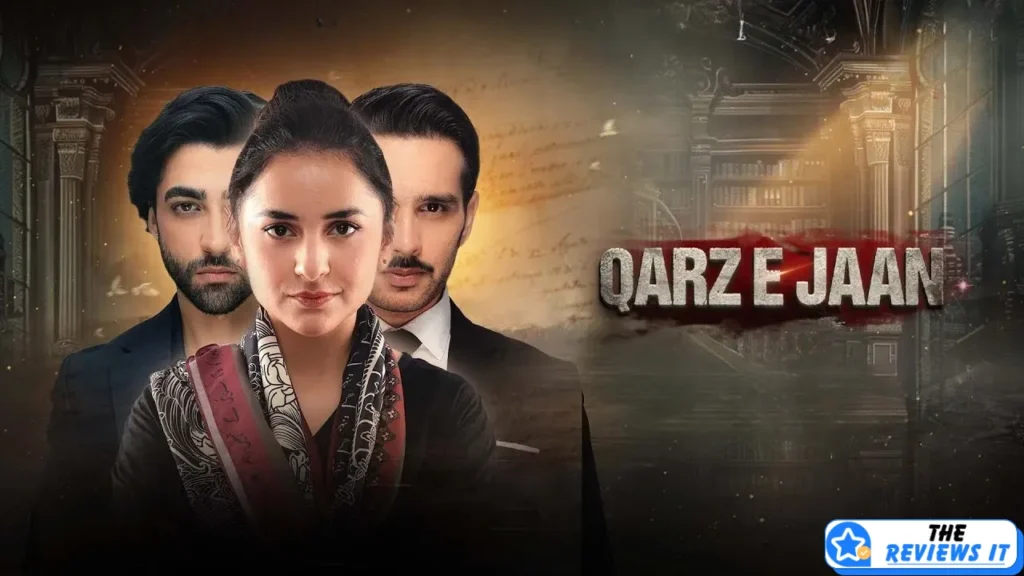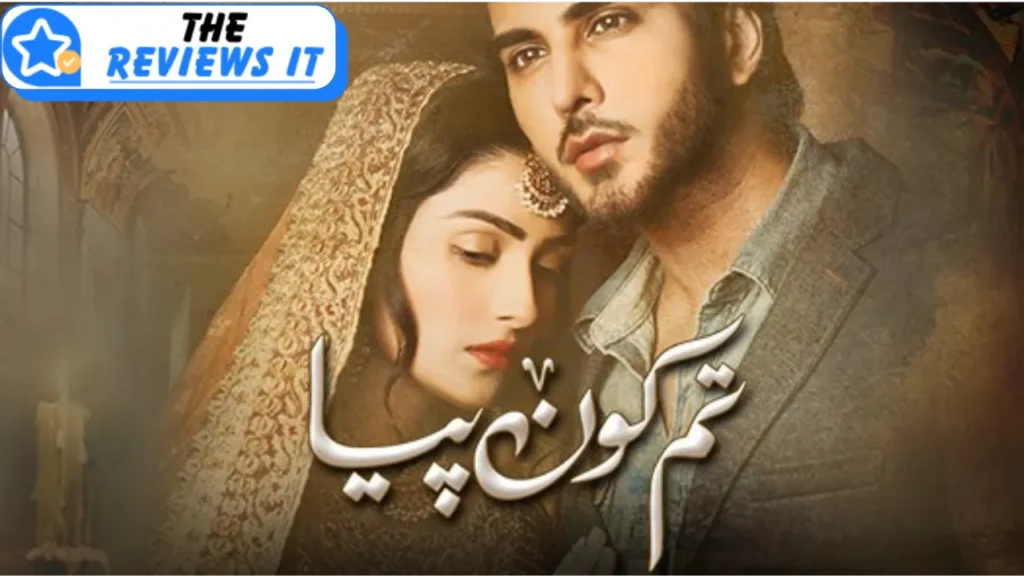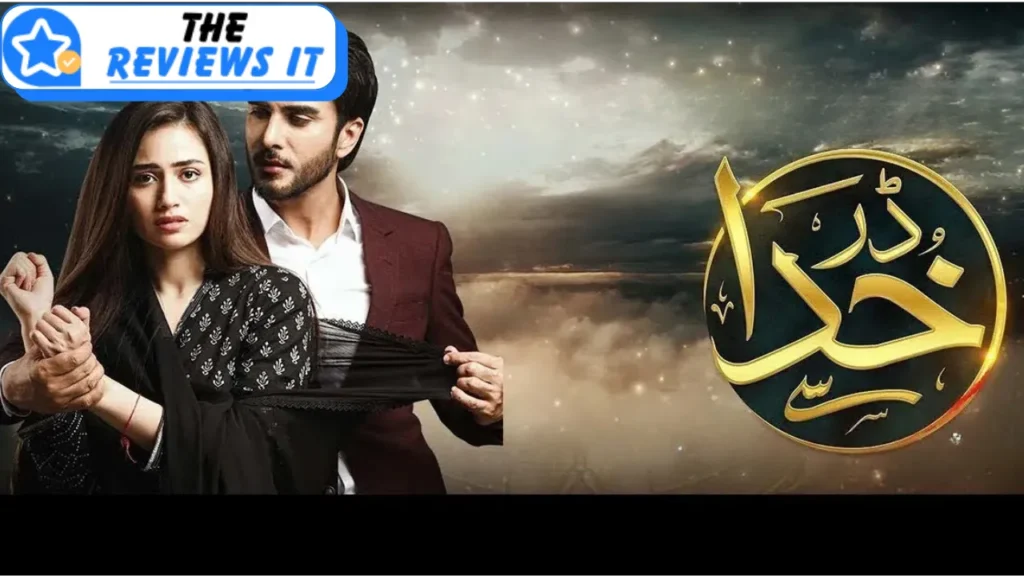In this Sang-e-Mah Drama Review, we dive into the second chapter of a trilogy that began with the remarkable Sang-e-Mar Mar. Known for its engaging storytelling, this HUM TV production continues to highlight social issues through a compelling narrative. Written by the highly praised Mustafa Afridi, who previously wowed audiences with Aseerzadi and Ehd-e-Wafa, and directed by the skilled Saife Hassan, Sang-e-Mah delves deep into the traditions of Pashtun society.
The significance of Sang-e-Mah lies in its focus on “Gagh”—an illegal Pashto tradition where marriage is forced by firing shots at a girl’s house as a form of public declaration. The drama portrays how this oppressive custom still prevails in some rural communities and the fight against it through legal means. While tackling such a hard-hitting issue, Sang-e-Mah also weaves an emotional storyline of love, loyalty, and strained relationships, particularly between a father and son.
What sets Sang-e-Mah apart is its diversity, showcasing various cultures, sects, and religions within its plot. The drama is not only a reflection of cultural richness but also serves as a mirror to social injustices still present in many regions. Its strong message of gender equality and the fight against the subjugation of women further deepens its importance.

Plot Summary
In this Sang-e-Mah Drama Review, the story revolves around the powerful Pashtun tradition of “Gagh,” an illegal custom where a man can forcefully claim a girl in marriage by firing shots at her house, making her his declared bride. This harmful tradition is at the heart of the drama, as it explores the struggles of a community trapped in outdated cultural practices.
Set in a rural Pashtun community, the drama showcases the conflict between modern values and deep-rooted traditions. As the characters battle with these customs, Sang-e-Mah also unravels a poignant tale of family dynamics, particularly the strained relationship between a father and son. Themes of revenge and retribution play a significant role in driving the plot, as past grudges and emotional wounds resurface, impacting not just individuals but entire families.
At its core, Sang-e-Mah is about challenging oppressive traditions while weaving a story of love, loyalty, and the quest for justice. With a cast of complex characters, the drama portrays how personal desires and societal norms often collide, creating a powerful narrative of conflict and resolution.
Characters and Performances
In this Sang-e-Mah Drama Review, the drama boasts an impressive ensemble cast that brings depth and complexity to its characters. Led by seasoned actors and a few surprising newcomers, the performances in Sang-e-Mah are a major highlight of the show. Each actor breathes life into their roles, making the drama even more engaging and memorable.

Atif Aslam made his much-anticipated television debut in Sang-e-Mah as Hilmand, a deeply conflicted and emotionally scarred character. His performance was nothing short of a revelation. Known primarily as a legendary singer, Atif surprised many with his strong on-screen presence, capturing the intensity and pain of a man caught between personal revenge and the traditional constraints of his community. His portrayal was raw, natural, and far from the usual melodrama, marking a stellar debut in acting.
Sania Saeed plays Zarsanga, the matriarch of a family torn by secrets and past conflicts. As always, Sania delivers a masterclass in acting, embodying the strength, wisdom, and heartache of her character. Her nuanced performance, with just the right balance of authority and vulnerability, makes her one of the standout performers in the drama. Sania’s ability to convey deep emotions through subtle gestures adds layers to her character.
Nauman Ijaz, a veteran in the industry, reprises his role in the trilogy with another complex and multi-dimensional performance. Playing Haji Marjaan, Nauman skillfully portrays the duality of a father bound by tradition and a man seeking redemption. His gravitas and command over the screen make his character compelling, and his chemistry with the younger actors is seamless.
Samiya Mumtaz as Zarsanga’s daughter-in-law brings a quiet intensity to her role. She’s one of those actresses who can express so much without saying much, and her performance adds a great deal of emotional weight to the family dynamics in the drama.
Omair Rana, as Mastan Singh, plays an intriguing character who brings a different perspective to the plot. His performance adds layers to the narrative, especially in his interactions with other characters, providing a subtle but impactful performance.
The younger cast, including Hania Aamir as Gul Meena and Zaviyar Ejaz as Hikmat, also shine in their respective roles. Hania, with her innocent charm and vulnerability, perfectly captures the essence of a young woman trapped in tradition. Zaviyar, son of Nauman Ijaz, shows promising talent, portraying a son torn between loyalty to his father and his desire to break free from oppressive customs.
Lastly, Kubra Khan as Sheherzade brings a breath of fresh air to the drama. Her character’s determination and inner strength are highlighted through Kubra’s strong performance, which adds to the diversity of personalities represented in Sang-e-Mah.
Overall, the performances in Sang-e-Mah are nothing short of stellar. The combination of seasoned veterans like Sania Saeed and Nauman Ijaz with fresh faces like Atif Aslam and Hania Aamir creates a dynamic cast that elevates the drama to another level. The chemistry between the actors, combined with their powerful individual portrayals, is one of the key reasons why Sang-e-Mah has resonated so well with audiences.
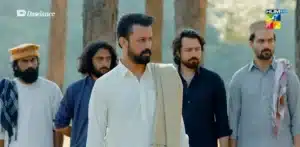
Cast Name and Characters
| Actor Name | Character Name |
|---|---|
| Atif Aslam | Hilmand |
| Nauman Ijaz | Haji Marjaan |
| Sania Saeed | Zarsanga |
| Samiya Mumtaz | Zarsanga’s Daughter-in-law |
| Omair Rana | Mastan Singh |
| Hania Aamir | Gul Meena |
| Kubra Khan | Sheherzade |
| Zaviyar Ejaz | Hikmat |
| Hasan Noman | – |
| Najiba Faiz | – |
Themes and Messages
In this Sang-e-Mah Drama Review, the drama explores several profound themes that resonate with audiences, particularly in the context of Pakistani society. By addressing issues such as societal norms, family loyalty, and the desire for revenge, Sang-e-Mah delves into the complexities of human relationships and cultural practices.
Societal Norms
One of the most prominent themes in Sang-e-Mah is the critique of harmful societal norms, particularly the tradition of “Gagh.” This custom, where marriage is enforced through public declaration and violence, is a focal point of the drama. The series challenges these outdated practices and highlights the urgent need for societal reform. Through its characters’ struggles and conflicts, Sang-e-Mah advocates for a more progressive understanding of relationships, emphasizing consent and equality in marriage. The drama encourages viewers to reflect on how such traditions impact not just individuals but entire communities, often perpetuating cycles of violence and oppression.
Family Loyalty
Family loyalty is another critical theme explored in Sang-e-Mah. The drama intricately depicts the bonds between family members, revealing how loyalty can sometimes lead to conflict and suffering. Characters are often torn between their love for family and their desire for personal freedom. This tension is particularly evident in the father-son dynamics, where expectations and traditions clash with personal beliefs and aspirations. The drama illustrates that while family ties can provide support and strength, they can also become a source of oppression when they are rooted in rigid adherence to tradition.
Revenge
Revenge is a driving force in Sang-e-Mah, weaving through the characters’ motivations and actions. The quest for vengeance often stems from deep emotional wounds and past grievances, illustrating how unresolved conflicts can fester and lead to destructive outcomes. The drama portrays revenge as a double-edged sword—while it may offer a temporary sense of justice or closure, it can also perpetuate cycles of violence and suffering. Through its narrative, Sang-e-Mah warns against the dangers of allowing revenge to dictate one’s actions, suggesting that healing and reconciliation are more powerful and beneficial paths.
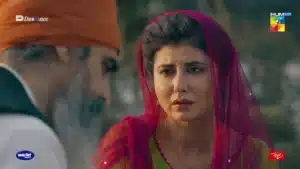
Direction and Cinematography
In this Sang-e-Mah Drama Review, the direction and cinematography of the drama play a pivotal role in enhancing the storytelling experience. Directed by Saife Hassan, known for his previous works such as Bari Aapa and Ehd E Wafa, the series showcases his ability to craft visually stunning narratives that resonate emotionally with the audience.
Direction
Saife Hassan’s direction in Sang-e-Mah is meticulous and immersive. He expertly guides the cast through emotionally charged scenes, capturing the nuances of each character’s journey. His ability to balance dramatic tension with tender moments elevates the overall narrative, allowing viewers to connect with the characters on a deeper level. Hassan’s keen eye for detail is evident in the performances he elicits from the cast, particularly in the emotionally intense confrontations that drive the plot forward.
Visual Quality
The visual quality of Sang-e-Mah is another standout aspect. The cinematography captures the rugged beauty of the Pashtun landscape, using sweeping shots of mountains and valleys that serve as both a backdrop and a character in their own right. This not only enhances the drama’s aesthetic appeal but also reinforces the themes of tradition and conflict, as the characters navigate their struggles in this vibrant yet harsh environment.
The cinematographers’ use of natural light and vibrant colors brings authenticity to the setting, immersing viewers in the cultural richness of the region. The choice of locations, from bustling bazaars to serene mountain tops, effectively illustrates the contrasts between tradition and modernity, creating a visual narrative that complements the story.
Contribution to Storytelling
Overall, the direction and cinematography of Sang-e-Mah work harmoniously to enhance the storytelling. The visual elements effectively convey the emotions and conflicts faced by the characters, enriching the viewer’s experience. The careful framing of shots and the thoughtful use of landscapes contribute to a deeper understanding of the cultural context, making the drama not just a visual feast but a meaningful exploration of its themes.
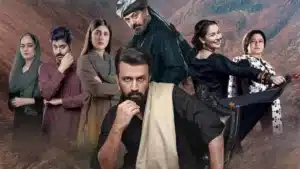
Pacing and Story Development: Engaging or Slow?
The pacing of Sang-e-Mah is another critical aspect that shapes audience engagement. The drama’s narrative unfolds with a deliberate pace that allows for character development and emotional depth. However, this slow burn can be both a strength and a weakness.
Engagement
On one hand, the slower pacing allows viewers to fully immerse themselves in the characters’ lives, building a connection that makes their struggles feel more impactful. The drama takes its time to explore the nuances of family dynamics and societal pressures, enabling audiences to understand the motivations behind each character’s actions. This thoughtful approach ensures that when significant plot twists occur, they resonate deeply with the audience, adding layers to the narrative.
Plot Twists
On the other hand, some viewers may find certain episodes drag on, especially in the absence of major plot developments. While the slow pacing contributes to character depth, it may also lead to moments of stagnation where the audience’s interest wavers. The plot twists, although strategically placed, might not always land with the expected impact due to the buildup preceding them.
Overall, while the pacing may challenge some viewers’ patience, it ultimately serves the story’s emotional arcs. The drama effectively maintains audience interest through carefully crafted scenes and character interactions, making it a compelling watch for those who appreciate nuanced storytelling. Sang-e-Mah strikes a balance between engagement and slow development, ensuring that the unfolding drama remains captivating, especially for those invested in the characters’ journeys.
Strengths and Weaknesses: What Worked and What Didn’t
Sang-e-Mah presents a mix of strengths and weaknesses that contribute to its overall impact as a drama.
Strengths
- Strong Writing: Crafted by Mustafa Afridi, the writing in Sang-e-Mah is rich and layered. The dialogue is often poignant and authentic, capturing the emotional weight of the characters’ experiences. The exploration of complex themes such as tradition, love, and revenge adds depth to the narrative.
- Exceptional Performances: The cast delivers remarkable performances, particularly Nauman Ijaz, Sania Saeed, and Atif Aslam, who brings a fresh dynamic to the screen. Their portrayals are both nuanced and compelling, making the audience invest in their journeys.
- Visual Storytelling: The cinematography enhances the storytelling, using the Pashtun landscape to create a visually arresting backdrop. The direction by Saife Hassan adds to this visual richness, making the drama not just a narrative but an experience.
Weaknesses
- Pacing Issues: While the slower pacing allows for character development, it can also lead to moments of stagnation. Some episodes may feel drawn out, which could disengage viewers looking for more action or faster plot progression.
- Character Development: Although many characters are well-developed, others can feel underexplored, leaving viewers wanting more depth in certain arcs. This inconsistency can affect audience investment in all characters.
- Predictability: Some plot twists may come across as predictable, which could lessen their impact. While the drama aims to keep viewers on their toes, it occasionally relies on familiar tropes that can make the storyline feel formulaic.
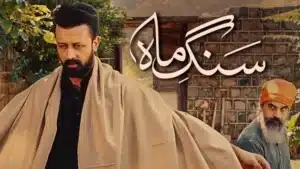
Audience Reception
The audience reception of Sang-e-Mah has been a blend of praise and critique. Many viewers have taken to social media to express their admiration for the performances, particularly Atif Aslam’s debut, which has been a significant talking point. Fans appreciate the portrayal of cultural issues, highlighting how the drama sheds light on traditional practices like Gagh.
However, some viewers have voiced frustrations over the pacing, suggesting that the slow burn may not be to everyone’s taste. Social media discussions often reflect a divided opinion on the character development, with some feeling certain characters lack the depth seen in others. Overall, the drama has sparked conversations about its themes, with many applauding its ambition and relevance in contemporary society.

Final Verdict: Is Sang-e-Mah Worth Watching?
In summary, Sang-e-Mah is worth watching for those who appreciate character-driven narratives and rich cultural storytelling. The strengths, particularly in writing and performances, often outweigh the weaknesses of pacing and predictability. While some viewers may find certain aspects lacking, the overall experience provides significant emotional and thematic depth that resonates well.
Personal Opinions: My Take on Sang-e-Mah
As a viewer, I found Sang-e-Mah to be a compelling drama that offers both entertainment and thought-provoking themes. My favorite moments often revolve around the powerful confrontations between characters, showcasing the emotional intensity of their struggles. I particularly enjoyed Atif Aslam’s portrayal of Hilmand, which added a unique flavor to the story.
However, I believe the pacing could have benefited from tighter editing in some episodes, which might have kept the audience more engaged. Despite this, the themes of tradition and family loyalty kept me invested in the characters’ journeys.
Conclusion: Wrapping Up the Sang-e-Mah Drama Review
In conclusion, Sang-e-Mah stands out as a significant addition to the landscape of Pakistani dramas. With its exploration of pressing social issues and a talented cast, it provides an engaging viewing experience that is both visually stunning and emotionally resonant. While it may have its flaws, the drama’s strengths make it a worthwhile watch, especially for those who appreciate stories that challenge societal norms. If you enjoy rich storytelling intertwined with cultural exploration, Sang-e-Mah is definitely worth your time.

